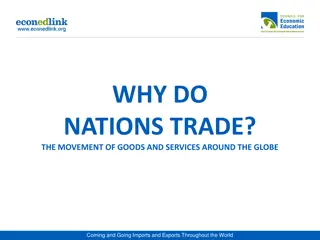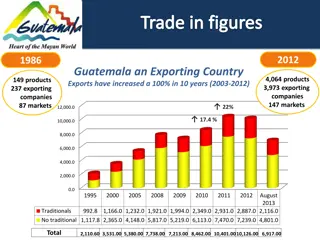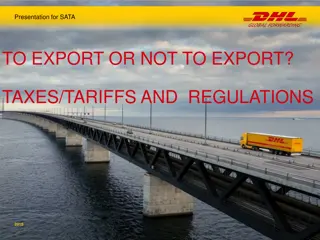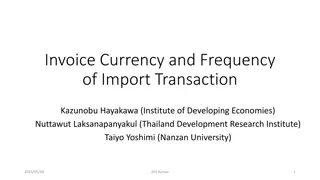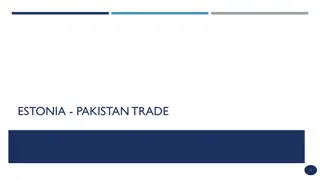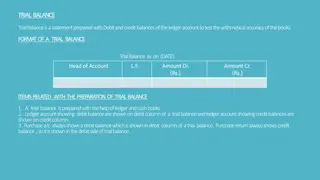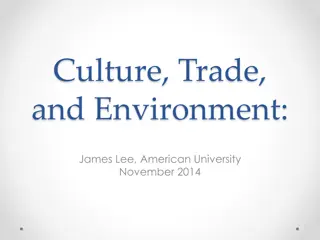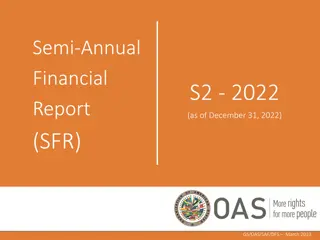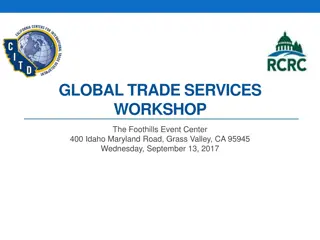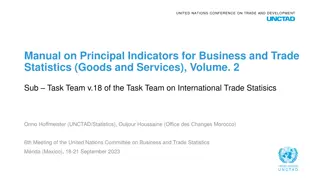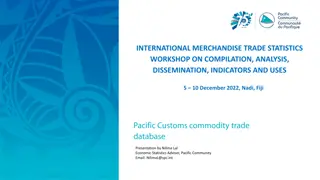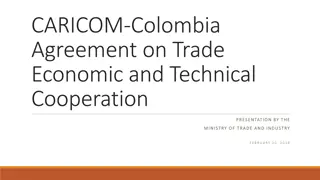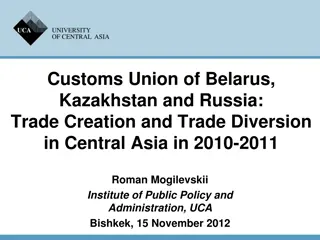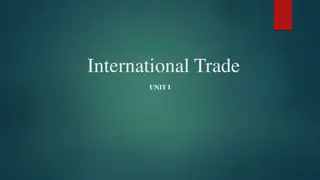Understanding Global Markets: Importing, Exporting, and Trade Balances
Explore the fundamentals of global business, including importing and exporting processes, trade balances, and the significance of balance of payments. Learn about direct and indirect exporting, trade surplus, trade deficit, and exchange rates in the context of international trade.
Download Presentation

Please find below an Image/Link to download the presentation.
The content on the website is provided AS IS for your information and personal use only. It may not be sold, licensed, or shared on other websites without obtaining consent from the author. Download presentation by click this link. If you encounter any issues during the download, it is possible that the publisher has removed the file from their server.
E N D
Presentation Transcript
Near East University Faculty Of Economics & Administrative Sciences MAN - 101 Introduction To Business Week 3 Business in Global Markets Tu berk KAYA tugberk.kaya@neu.edu.tr
~BUSINESS IN GLOBAL MARKETS~ IMPORTING AND EXPORTING When local businessman buys foreign goods and services from other countries to be sold in the local market, it is called importing. The foreign goods and services purchased by local businessman are called imports. Exporting occurs when the local business people sell domestically produced goods and services to foreign countries. These products which are produced domestically to be sold to foreign markets are called exports.
Exporting Exporting can be exercised in two ways: direct or indirect. Selling the finished product to foreign countries is called direct exporting. While a business person does direct exporting of the final products, he also does indirect exporting of the components and accessories as the input for the finished product. Exporting cars to foreign countries would be an example of direct exporting. On the other hand, components such as tires, rods, engines, and car seats are indirectly exported items in car exporting.
Balance Of Trade: Favorable And Unfavorable The relationship between a country s export and import signifies the said country s balance of trade. If the country s export is more than its import, then the balance of trade represents a favorable situation. This favorable situation is called trade surplus. Trade deficit on the other hand, means unbalanced trade due to the discrepancy between the country s imports and exports when the country s imports are larger than exports.
Balance of Payments Like the balance of trade, the balance of payment might also lead to a favorable situation if the incoming money flows into a country is more than the outgoing money flow from a nation. This favorable balance of payments is called balance of payment surplus. The balance of payment deficit is a result of the outgoing money being more than the incoming money of a country.
Exchange Rates Exchange rate is the value of a nation s local currency in relation to the currencies of the other countries. When the currency changes up and down continuously in money markets and lead to currencies to have floating values, it is called floating exchange rates.
Stages Of Global Business Exporting, Importing And Countertrading Trading between nations commonly starts with the sole trading of the goods and services that can be described as exporting and importing between nations. If an opportunity is seen for trade, with the help of agent or offices in foreign countries, the local manufactories make it possible for their commodities to be sold in other countries. Countertrading, a bartering (exchange goods or services without involving money) agreement is also used in many countries.
Franchising: Manufacturers or other suppliers may give a local party, a wholesalers or retailers, in the foreign country the right to sell their products under their globally registered brand name. Suppliers and local party make an agreement that specifies the responsibilities of each side. The manufacturer or supplier is called FRANCHISER and local party that gets the right to sell the goods in its domestic market is called the FRANCHISEE. The franchiser provides its registered brand name, building and business operation plans, site selection help, accounting and management systems and other services to assist the franchisee.
Foreign Licensing: Under the contracted licensing agreement, the manufacturer or supplier allows the local party to use it intellectual property which may be agreement a local company or manufacturer gains the right manufacture and sell the goods with the same manufacturing methods and trademarks of the foreign seller/manufacturer, in the local territory. Subcontracting: The foreign companies hire local companies to produce, distribute and sell goods & services. Under this contractual agreement, the subcontractor produces, distributes or sells in the name of the foreign companies. Many manufacturers use foreign subcontractors to produce their goods in the subcontractors countries since they save on import duties and labor costs. Overseas Marketing: The seller, supplier or manufacturer opens and owns a sales office or division in foreign countries.
Overseas production: The seller, supplier or manufacturer makes the production in the overseas countries where they want to sale their products. International Joint Ventures: The companies in different countries share the risks costs, profits and management responsibilities by utilizing their resources and capabilities to serve in any one of the international markets. International Mergers and Acquisitions: Companies focusing on international operations to sell goods and services to the foreign markets may go international by merging with or acquiring local companies registered in the countries in which they want to penetrate. Merger is a transaction in which two firms agree to integrate their operations relatively co-equal basis and create a new identity. On the other hand, one firm s buying the control of all shares in another company and making subsidiary is called acquisition.
The Barriers In Global Business Tariffs: Trade Restrictions: Political and Legal Barriers: Physical (local) Barriers: Social and Cultural Barriers:
References Ebert, R. J. and Griffin, R. W. (2015) Business Essentials. 10th Edn. Harlow: Pearson Education Limited Kadri Mirze (2002) Introduction to Business. Istanbul: Literat r Publishing.
Any Questions? tugberk.kaya@neu.edu.tr











